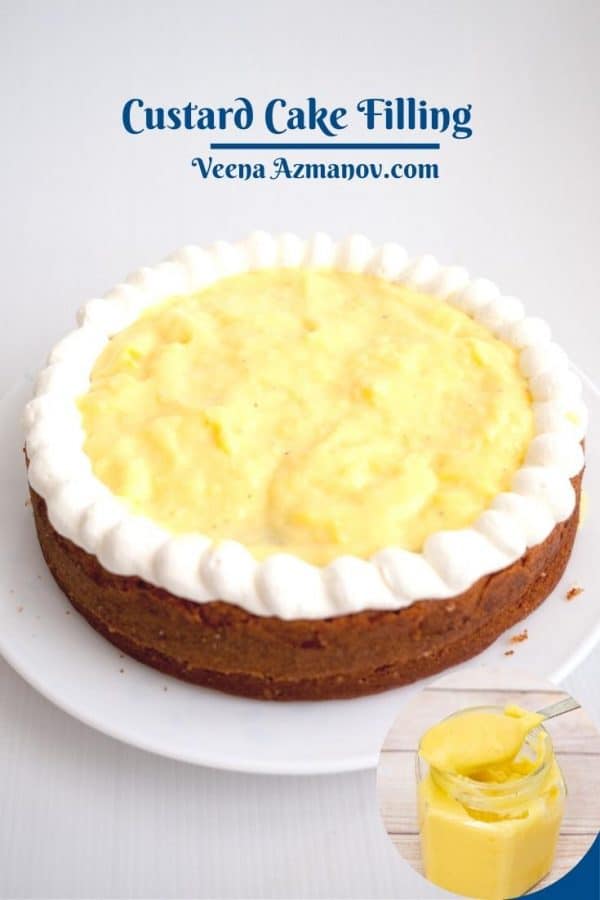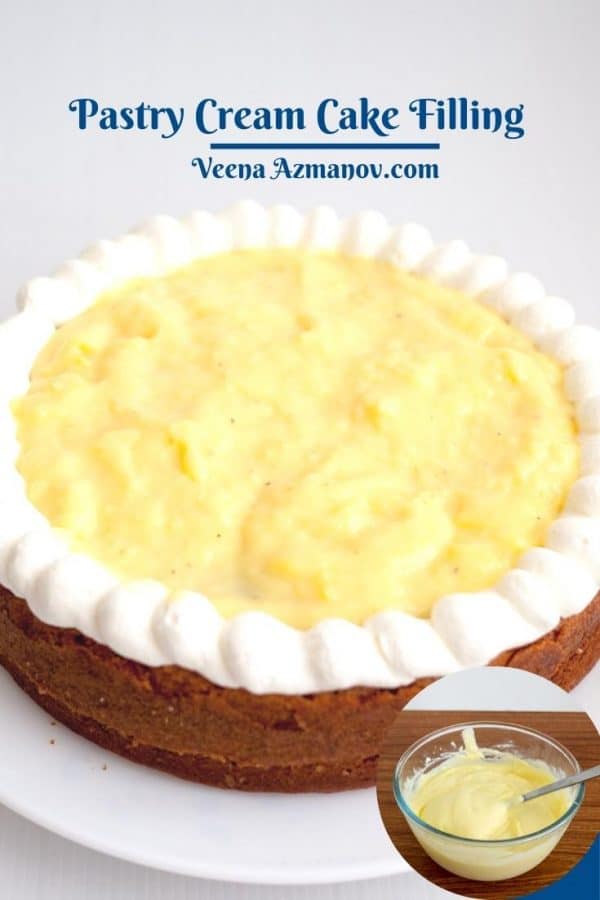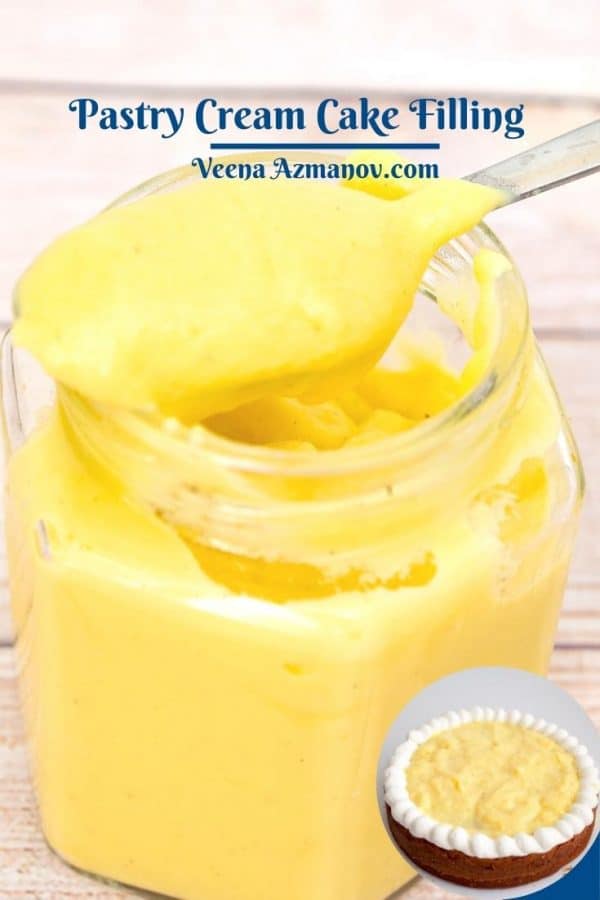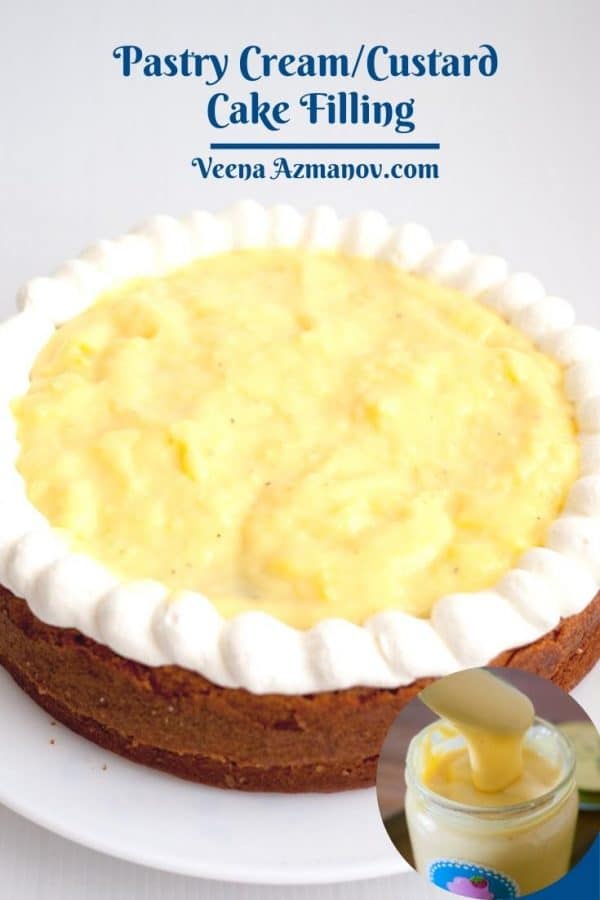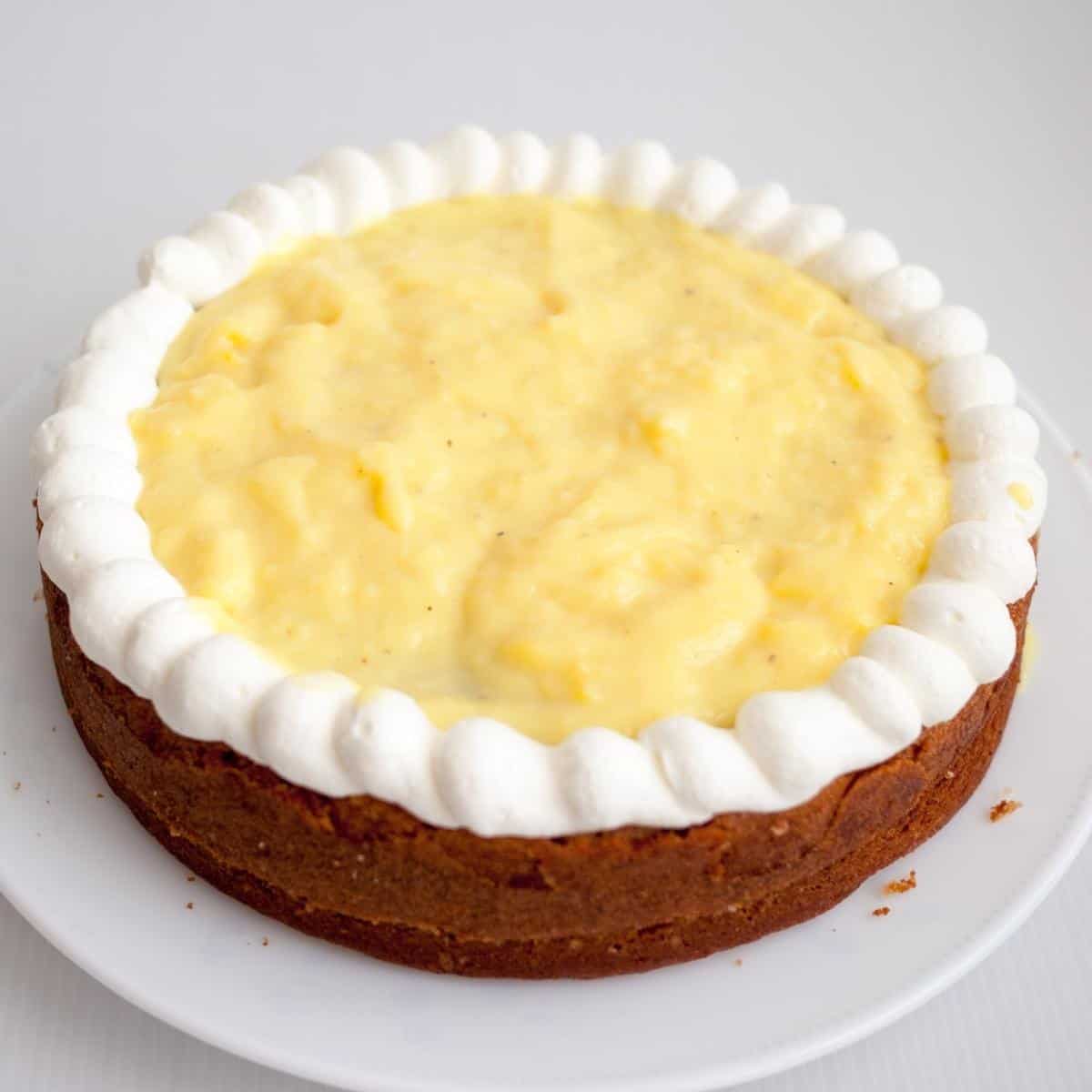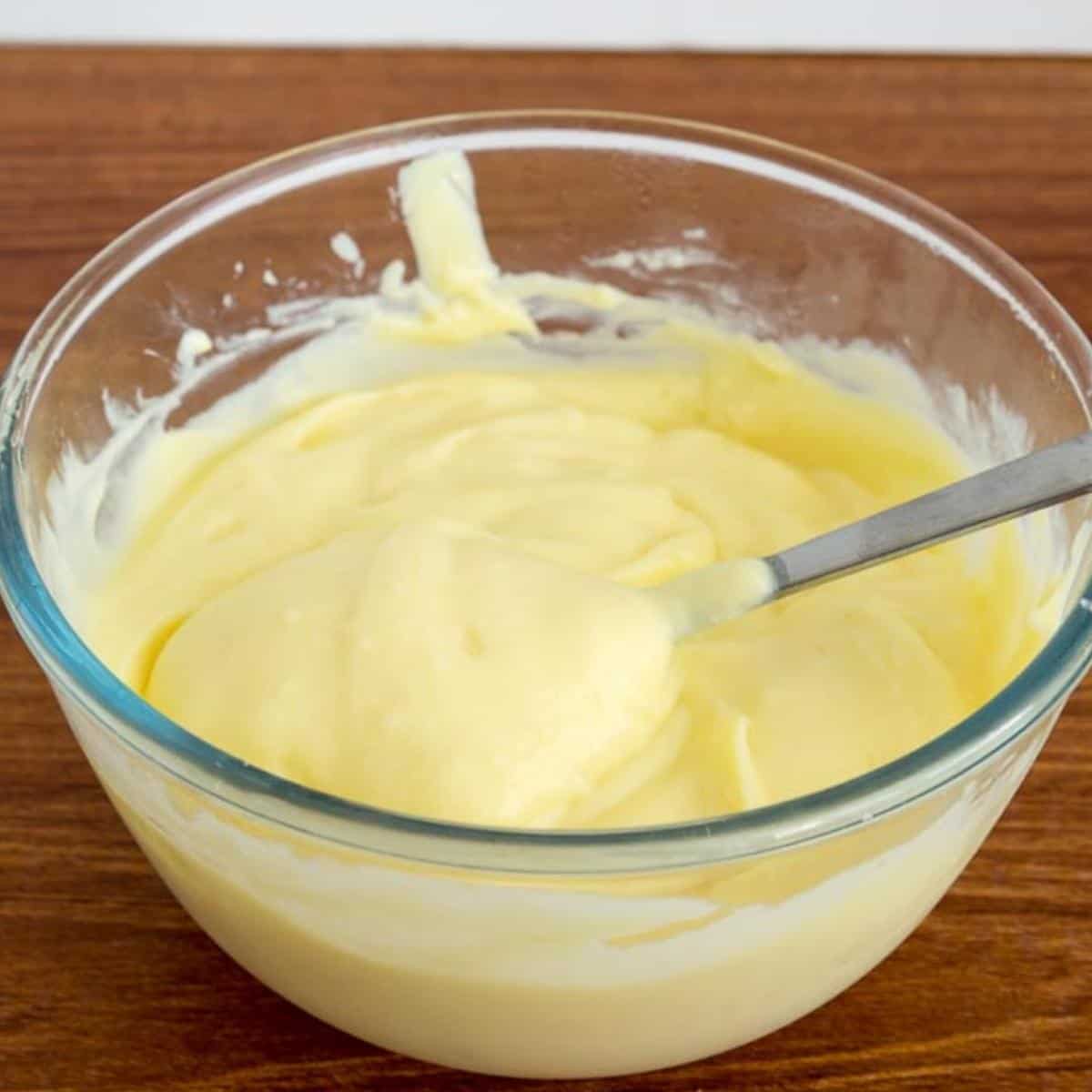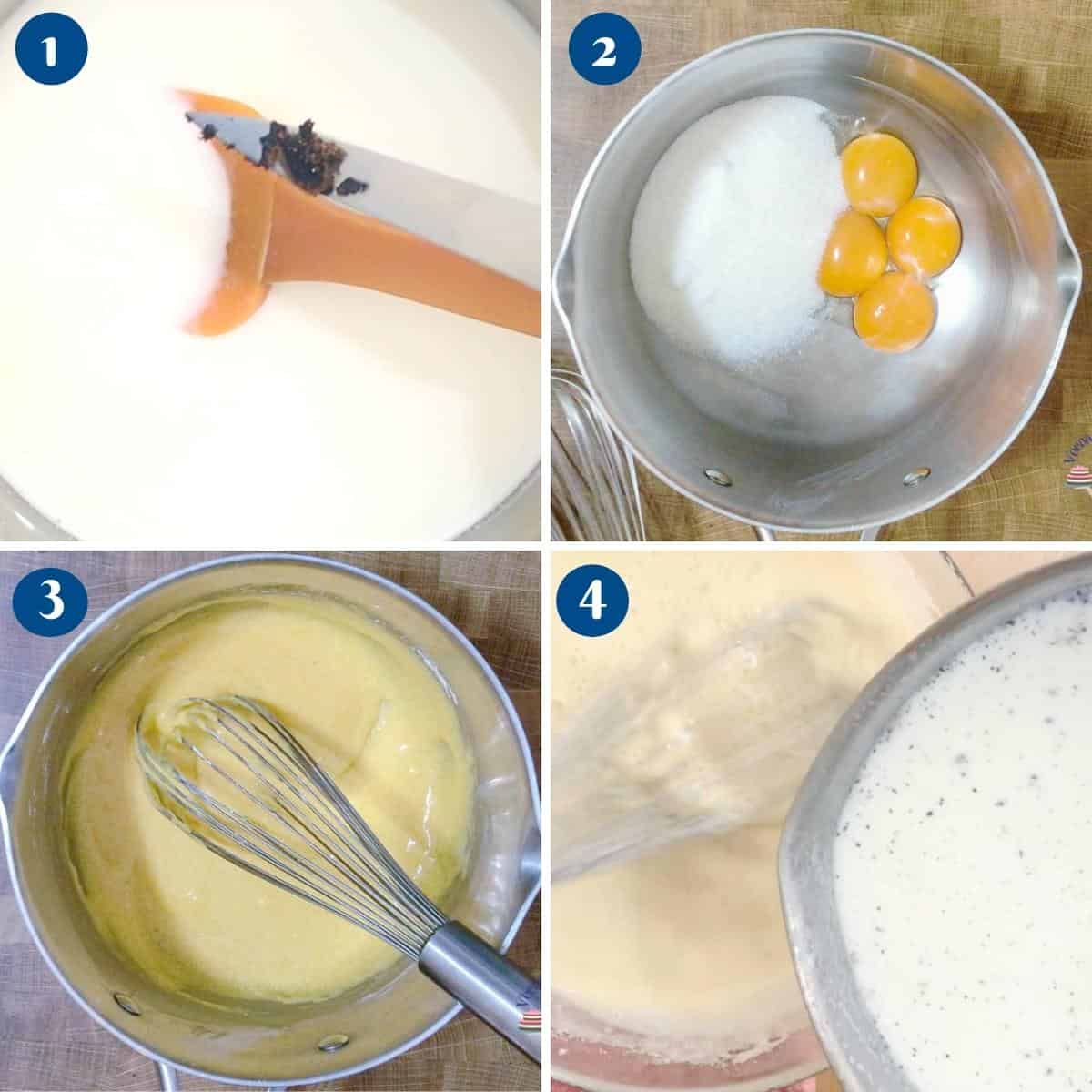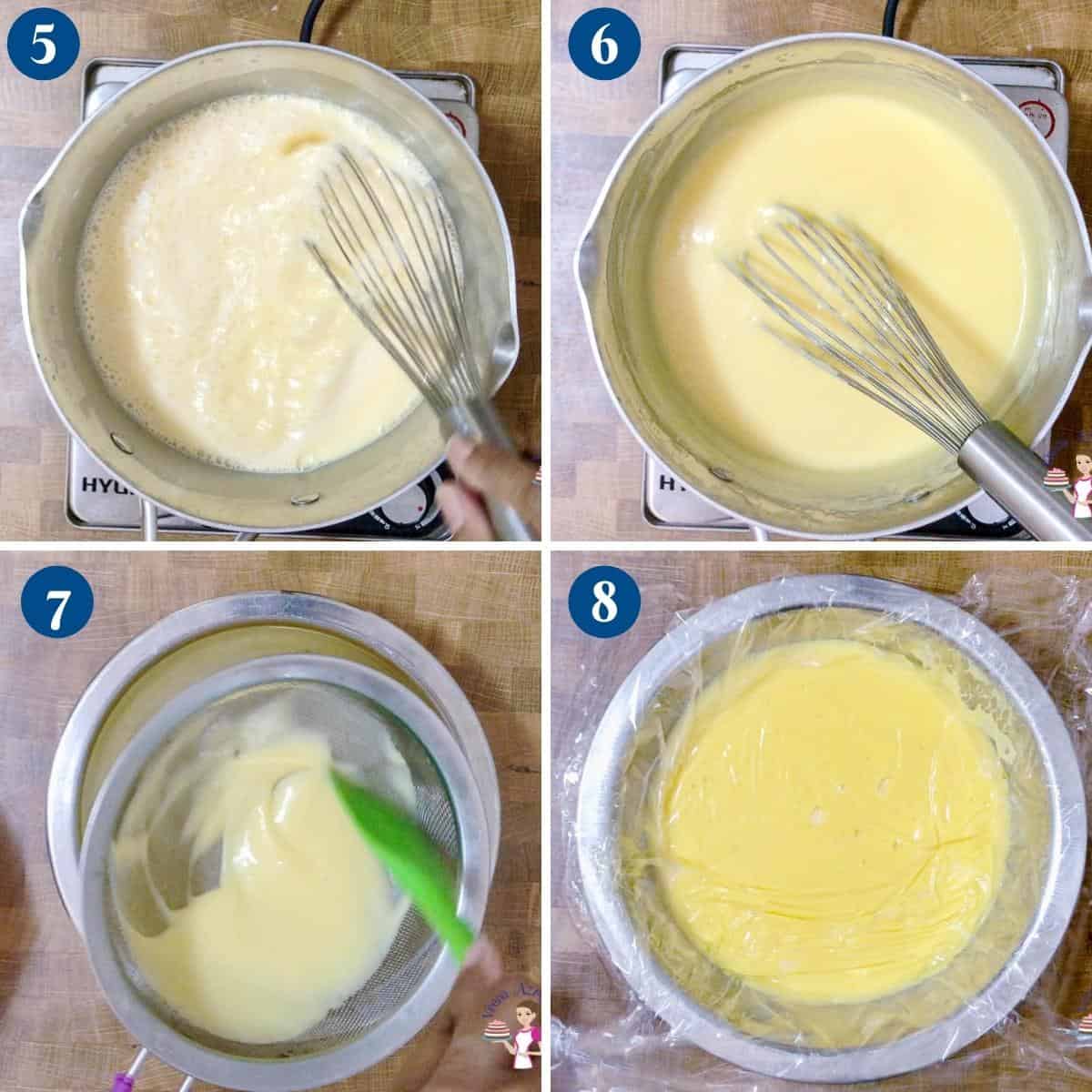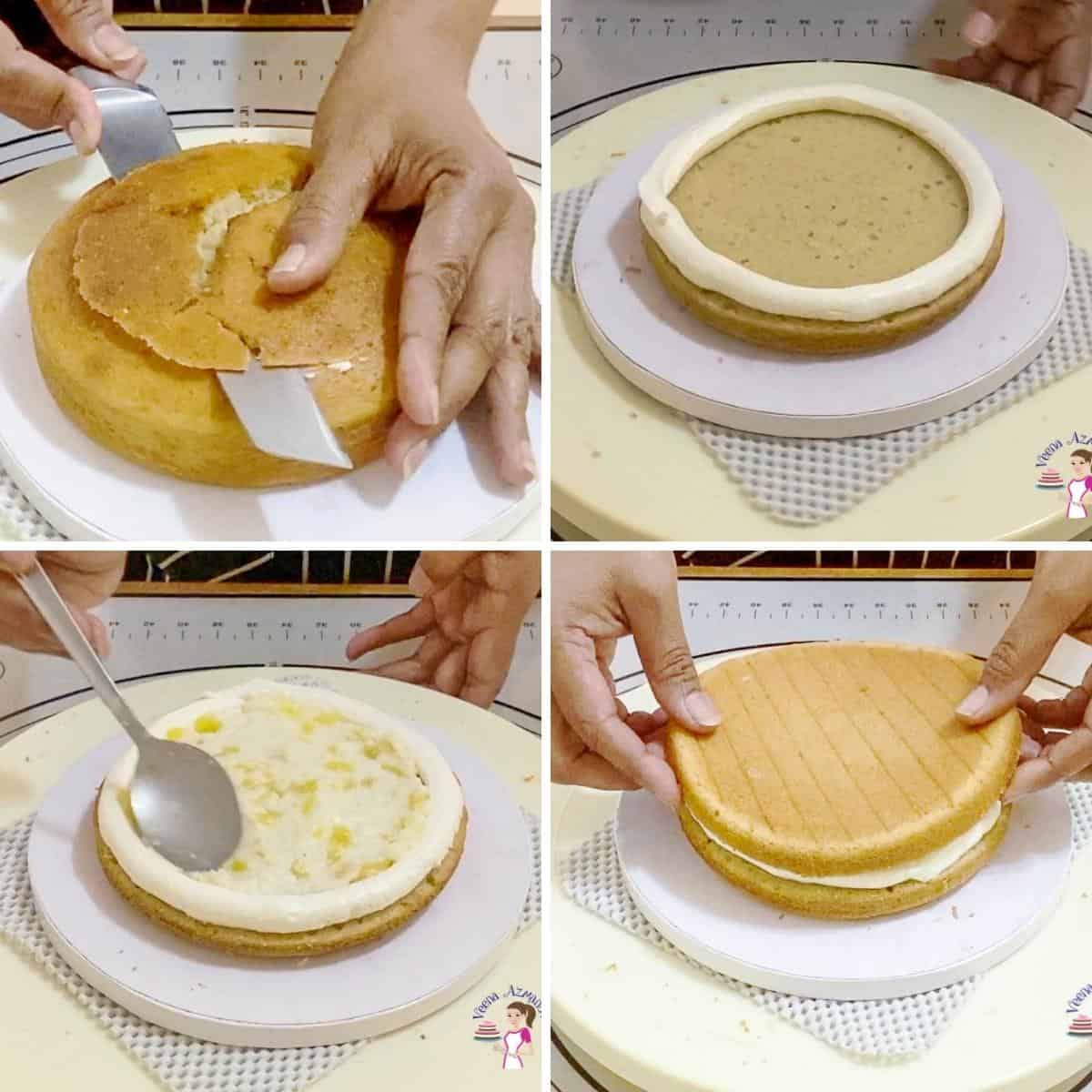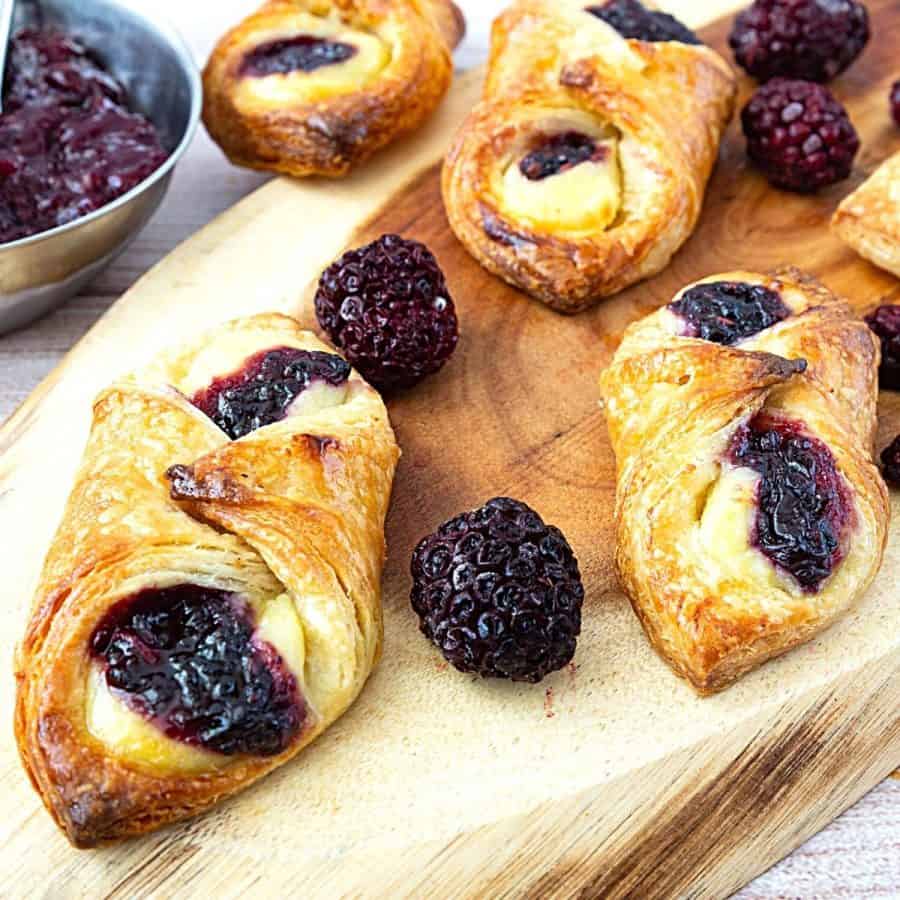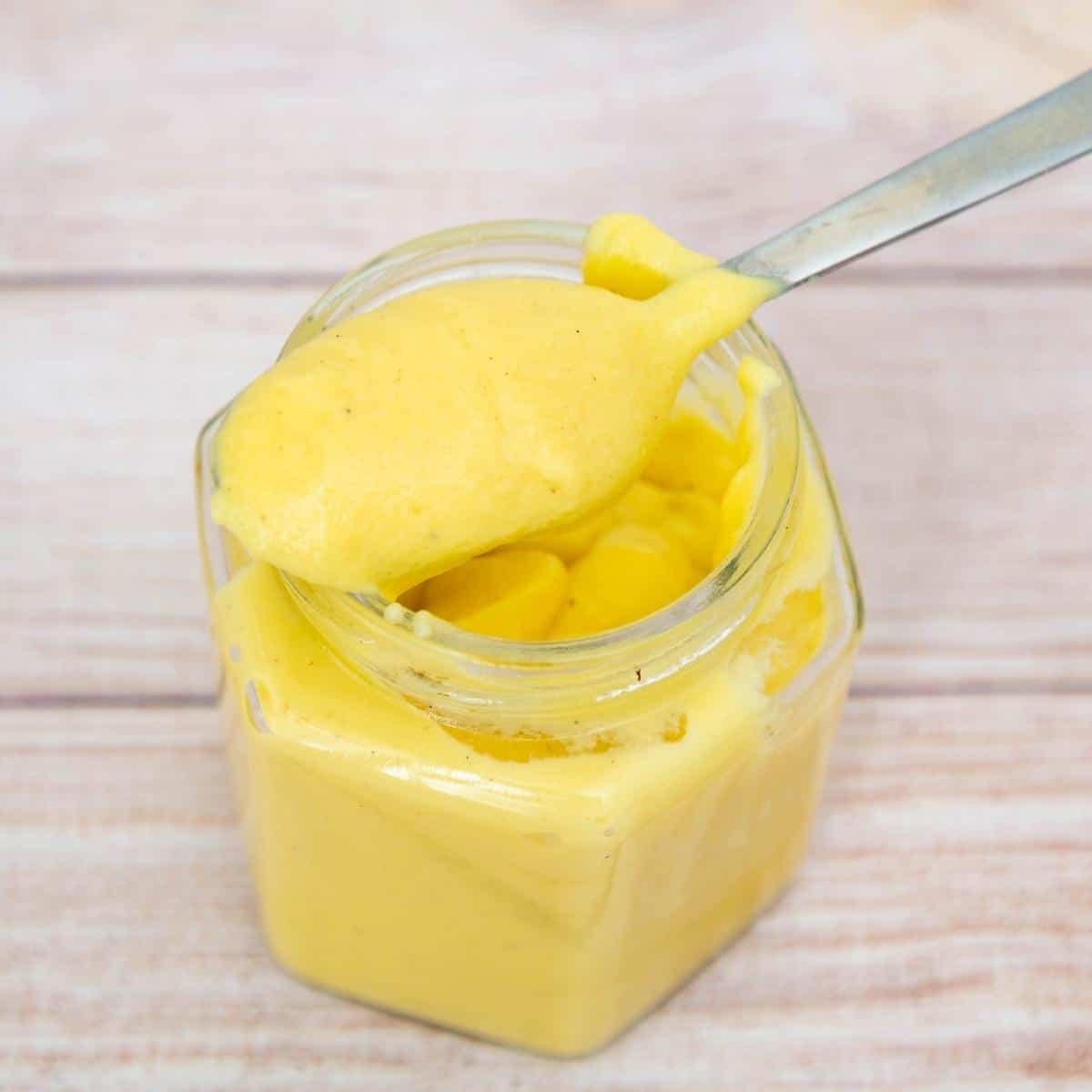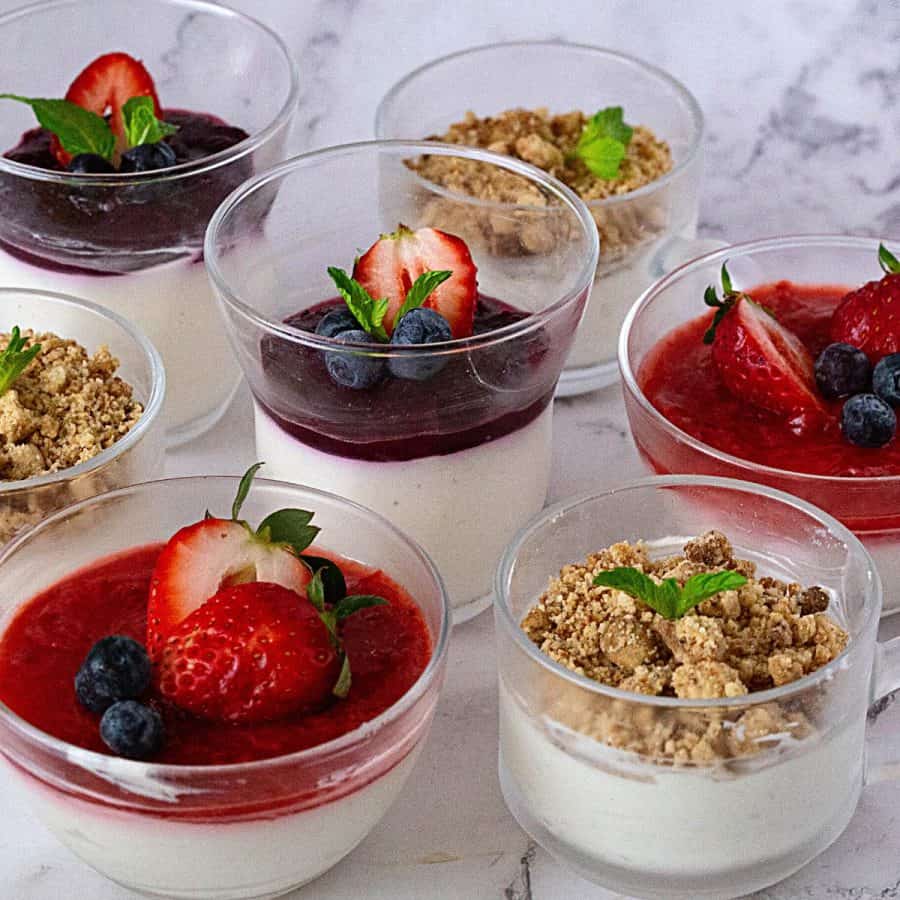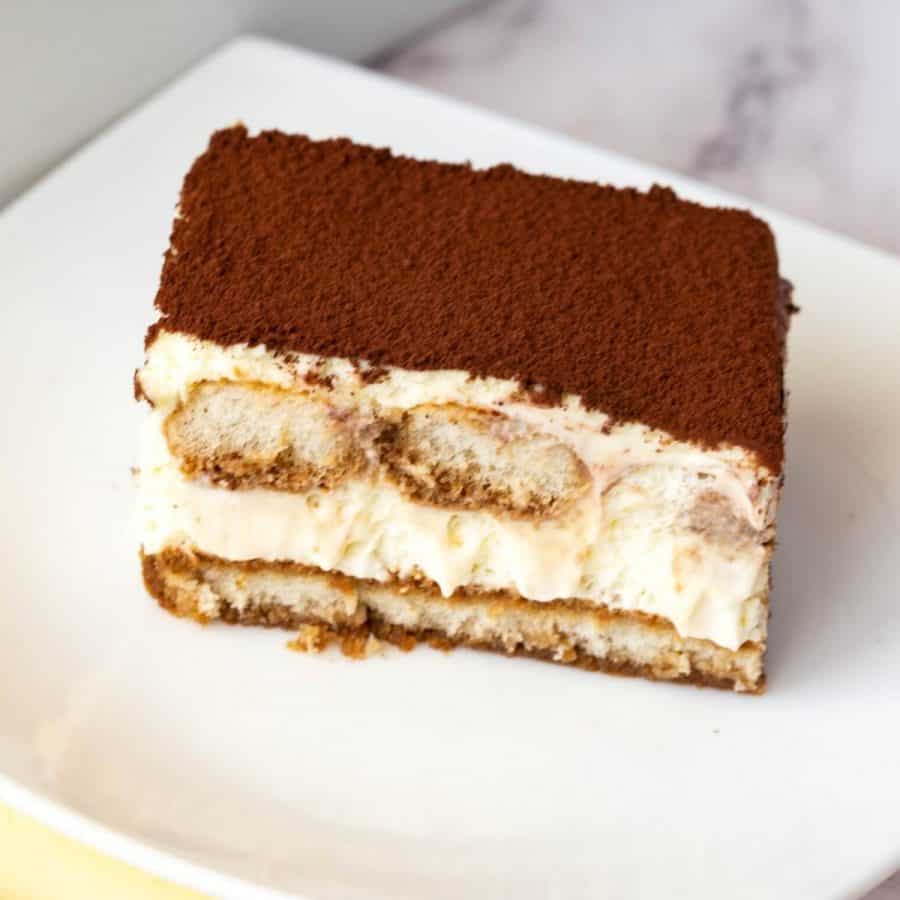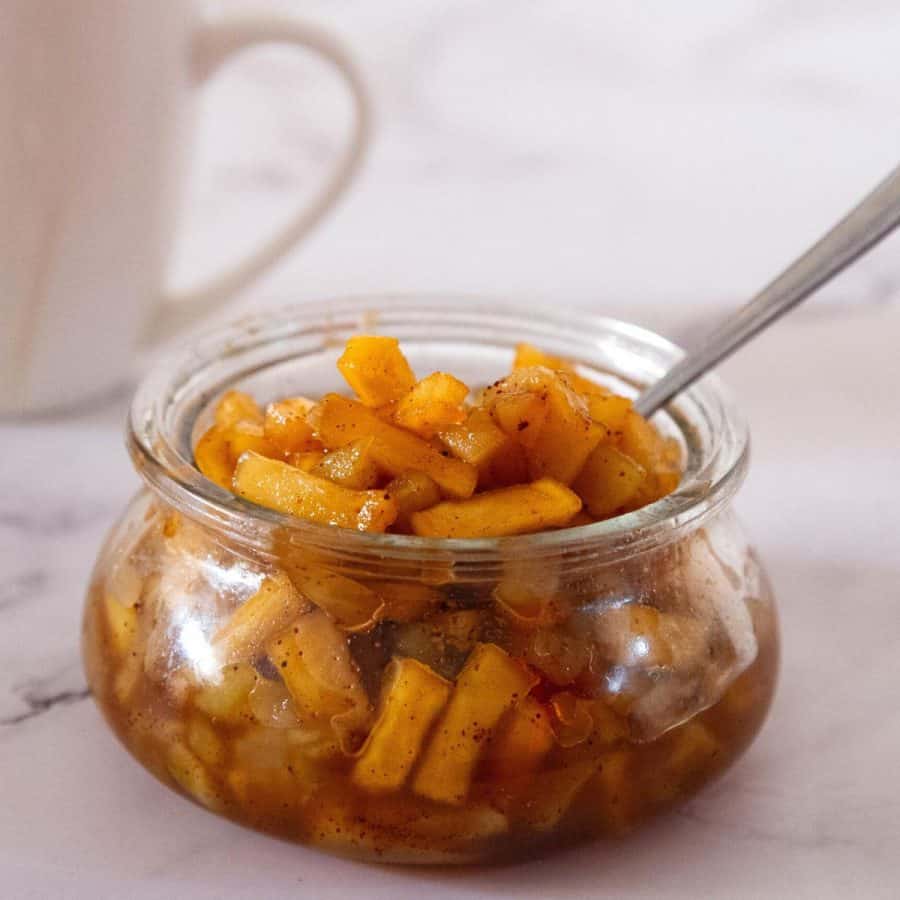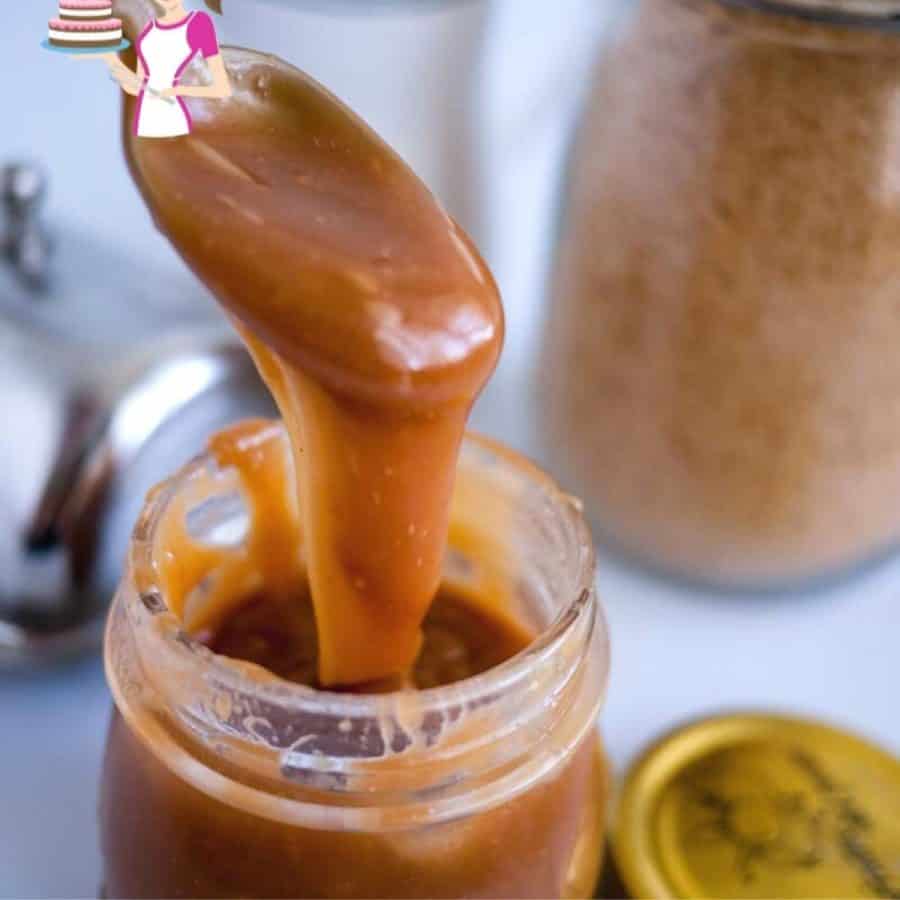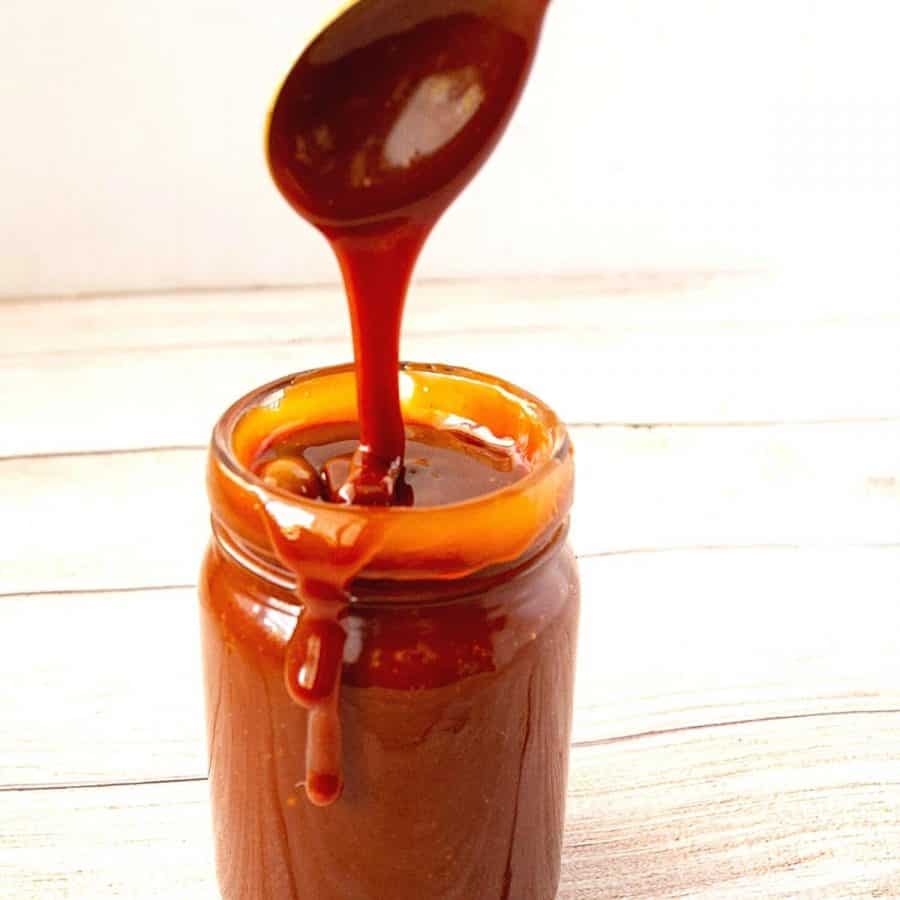As a kid, I would get confused when mom would sometimes say vanilla custard, and other times she would say pastry cream? They both look the same. Well, honestly they are almost the same. I remember my mom’s custard was thick and creamy goodness. She made it by thickening milk with eggs and sugar. I’d sit patiently when she’d pour the custard so I could lick the pot clean. Oh, that pot didn’t need any cleaning because we did a great job of licking every bit of cream in there. It’s amazing how custard or pastry cream can be used in so many ways, not just as a dessert but also as an ingredient in other desserts!
Why make this filling?
If you look at my classic vanilla pastry cream recipe it is slightly different from this one. The main difference is pastry cream has more sugar, less starch, and no whipping cream. I make this vanilla custard a bit more durable so it has more body to stay in between layers. But, I also make it more creamy and rich so every slice of cake just melts in the mouth. Using less sugar works great because most cakes are frosted with more sugar syrups and frosting anyway. Today, I have shared with you the classic method of making this custard or pastry cream. But, I do have a one-pot, no-fuss method with video. Both methods will produce smooth, creamy, and velvety custard cake filling.
Ingredients and substitutes
Milk – Use regular full-fat milk, not low-fat milk. The milk is one of the main ingredients here, so make sure you use at least 3% fat. Low fat will just not thicken enough. Egg yolks – We do need good quality, large egg yolks here. It’s what gives the pastry cream its richness. The egg yolks also contribute to the color of the final product. So, I prefer to use organic eggs with a light orange color. Again this is optional, the regular egg yolks work just fine. Vanilla – You also must use good quality vanilla for this pastry cream. It does make a huge difference. I use a vanilla bean but you can also use 1 tsp vanilla bean paste or 2 tsp vanilla extract. Cornstarch/cornflour – In addition to the egg, this cornstarch will help thicken the pastry cream even more. You can add more or less depending on the consistency of pastry cream you need. You can also use custard powder instead of corn starch.
Step-by-step: Vanilla custard cake filling
In a mixing bowl combine egg yolks, sugar, salt, and flour/cornstarch. Whisk until light and foamy. Set aside Heat milk, whipping cream, and vanilla bean scrapings in a medium saucepan over medium heat. Let come to an almost boil but do not boil.Pro tip – We prevent the milk from boiling so it does not curdle the milk in the next step. Once the milk has reached an almost boiling point. Carefully pour some of the hot milk mixture into the egg mixture a little at a time.Pro tip – This has to be done gradually. Start with 1/4 cup of the milk to eggs – mix thoroughly. Followed by another 1/4 cup – mix thoroughly. Once almost half the mixture has been added, the eggs should have been tempered. Now, pour the egg mixture back into the saucepan with the remaining milk to continue cooking.
Stovetop
Place the saucepan back on low heat and continue to cook stirring constantly. The mixture will slowly start to thicken. Continue to cook on low until the custard is thick and coats the back of your spoon.Pro tip – This has to be cooked slowly on low heat with constant stirring or the mixture will curdle. You will notice the big bubbles start to disappear as the mixture thickens. When done – strain thru a sieve. Finally, add the butter and give it a good mix.Pro tip – Straining the mixture will remove any curdled eggs and the butter will give it a nice velvety texture. Cover the custard with plastic wrap making sure the plastic is in contact with the surface of the custard to prevent skin from forming.Pro tip – A skin will make a very lumpy custard filling so we want the plastic to touch the surface of the custard.
Cool
Place in the fridge to cool completely. When cooled place the custard in the bowl of a stand mixer with a whisk attachment and whip for 3 minutes on high.Pro tip – The cream in the custard will whip light and fluffy. It also gives a smooth glossy filling that looks like mousse and will hold better If not using immediately continue to chill in the fridge. Once chilled your custard is ready to be used as the cake filling, trifles, tarts, or any dessert that calls for pastry cream. It is delicious on its own too
The right method to fill cakes
If you are a cake decorator, then by now you know what I mean when I say you need to have a buttercream or frosting dam around the edge of your cake layer before you add any soft filling, be it this vanilla custard cake filling, strawberry, blueberry or any of those delicious cake filling recipes I have on this blog. The frosting dam has to have a thick consistency in order to keep the filling from oozing out of the cake. Once you have a dam securing the filling you can do all kinds of decorations. Whether you just make a simple dessert cake or whether you want to cover it with fondant and add more accessories. See my video tutorial on how to level, torte, fill and frost a cake like a pro
Tips for making custard cake filling
Use the right ingredients: Choose high-quality ingredients for your custard filling. This includes using fresh eggs, high-fat milk or cream, granulated sugar, and pure vanilla extract for flavor. Temper the eggs: When incorporating eggs into your custard, it’s important to temper them properly to avoid curdling. To do this, slowly add a small amount of the hot milk or cream mixture to the beaten eggs while whisking continuously. This helps bring the eggs up to temperature gradually without cooking them too quickly. Strain the custard: After cooking the custard, strain it through a fine-mesh sieve to remove any lumps or bits of cooked egg. This step ensures a smooth and silky texture for your filling. Cook over low heat: Custard should be cooked slowly and gently over low heat to prevent curdling or scrambling. Stir constantly to distribute heat evenly and avoid any hot spots. Use a double boiler or bain-marie: If you are new to making custard you can further protect the custard from direct heat. Consider using a double boiler or bain-marie method. This involves placing the custard mixture in a heatproof bowl set over a pan of simmering water. The indirect heat helps control the cooking process and minimizes the risk of overcooking or curdling. Don’t rush the thickening process: Custard thickens as it cooks, but be patient and avoid turning up the heat to speed up the process. Rushing the thickening can result in an uneven texture or lumps. It’s important to stir continuously and wait for the custard to reach the desired consistency naturally. Chill thoroughly before using: After cooking, allow the custard to cool to room temperature, then refrigerate it for several hours or overnight to set and develop flavor. This chilling time allows the custard to firm up and become easier to handle for filling cakes. Layer the custard evenly: When using the custard as a cake filling, ensure an even layer between the cake layers. Use an offset spatula or a piping bag to spread the custard evenly, ensuring it reaches the edges without overflowing. Store properly: If you have leftover custard, store it in an airtight container in the refrigerator. Consume it within a few days, and avoid freezing custard as it can alter the texture and result in separation.
Troubleshooting
Why is my pastry cream curdled? Pastry cream needs to be cooked slowly on medium to low heat. Too high heat can cause the eggs to scramble and curdle which results in a lumpy pastry cream Why is my pastry cream lumpy? I prefer to use a whisk and cook pastry cream on medium-low heat to keep things moving and homogenous. If the heat is high and the mixing is not even, the custard can get lumpy. Remove it off the heat – give it a good whisk and place it back on low to continue cooking. Adjust heat accordingly. Why is my pastry cream is too thin? Crème pâtissière needs to be cooked until it is thick enough to coat the back of a spoon. If you take it off too quickly it will be thin and often undercooked. Why is my pastry cream is too thick? Too much starch can cause the custard to be too thick or sometimes doughy. So, always measure the ingredients well and use only the amount stated in the recipe. You can thin down a thick creme patisserie by adding a little whipped cream.
What is pastry cream (creme patisserie) used for?
Very commonly used in classic profiteroles, mille-feuille, and chocolate eclairs. Use pastry cream as a cake filling for a layered cake. Add some strawberry puree and whipped cream to creme patisserie make a quick strawberry mousse. And, add some melted chocolate and whipped cream to pastry cream to make a quick chocolate mousse. Spread creme patisserie evenly in a pre-baked tart shell topped with your favorite fruits and you have a fruit tart. Also, you find it often used in most bakeries and restaurants as a filling for cakes and pastries. In addition, one of the easiest desserts you can create is a custard pie such as fruit tart with vanilla pastry cream as a base topped with fresh fruits as I did in my Blueberry Tart or Fresh Strawberry Tart.
Cream Puffs, Cheesecake Cream Puffs Profiteroles with Vanilla Pastry Cream Danish Pastry – Dough, filling, and shaping Creme Caramel, Parisian Flan French Custard Tart Strawberry Panna Cotta, Blackberry Panna Cotta Bavarian Cream (Creme Bavaria ~ Creme Bavarois) Strawberry Pudding from Scratch
Frequently asked questions
Did you LIKE this recipe? Save it for later. You can find my recipes on Pinterest. Follow me on Facebook, Twitter, and Instagram.Subscribe, and I’ll send you new recipes right to your inbox.
Thank you for sharing - Save for later
